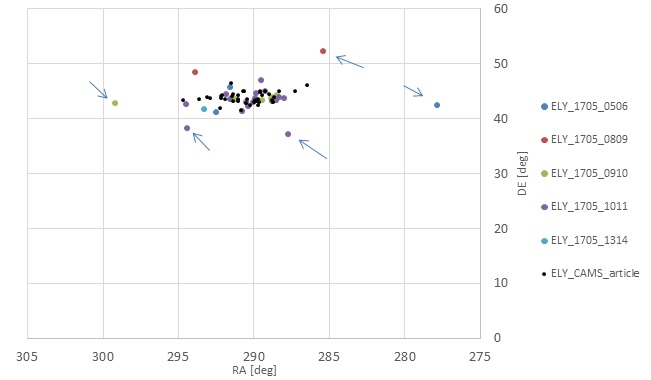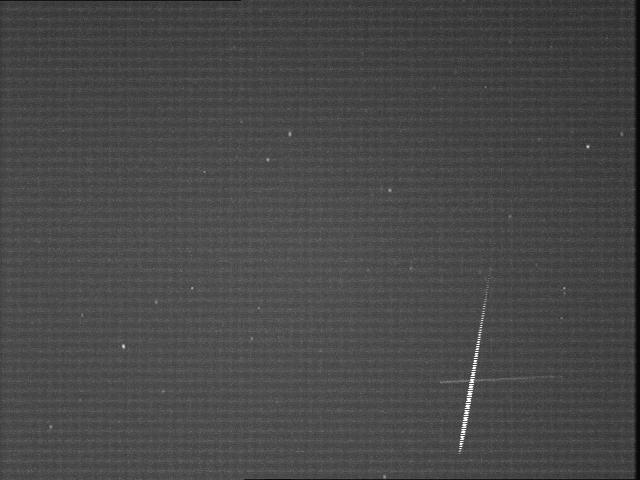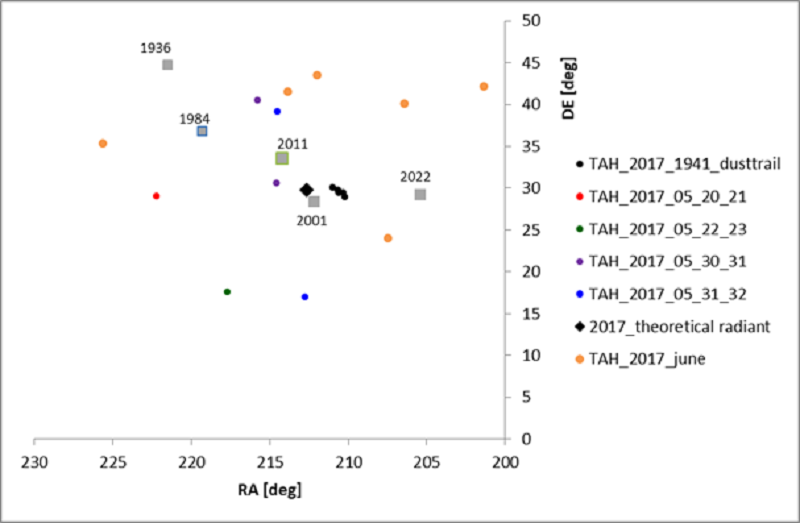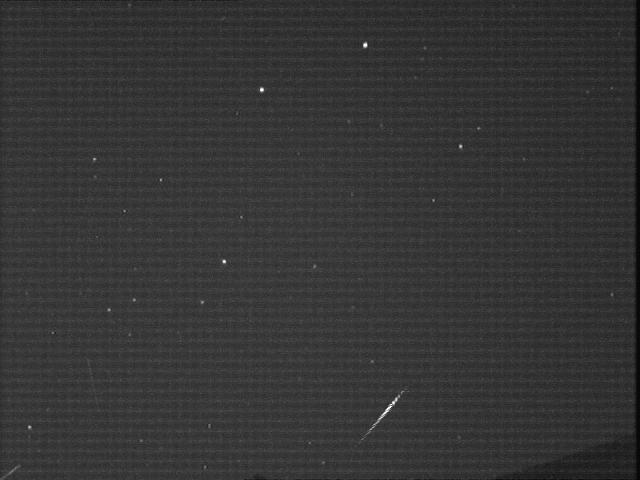In May and June 2017, routine observations of CAMS-BeNeLux video network recorded meteoric activity from the eta-Lyrids and tau-Herculids (061 TAH) meteor showers. These interesting sets of data allows us to better apprehend the activity level and profile of these two largely unknown sources.
The eta-Lyrids (145 ELY) find their origin in the famous long-period comet C/1983 H1 (IRAS-Araki-Alcock) which came close to the Earth (4.7 millions of km) on May 11th, 1983. Activity coming from this source has then been noticed since the middle of the 80’s, but could not properly be confirmed until the 2000’s, when the activity of the eta-Lyrids increased: ZHR, which were usually close to 2, climbed up to 6-7 in 2000, 2001, 2006 and 2016. In 2017, Northern European skies allows the CAMS BeNeLux video network to be active on May 5-6, from May 8 to May 11, and May 13-14, allowing a proper monitoring of the activity of this source, which maximum date was hard to precisely determine. During this period of time, the network recorded 27 eta-Lyrids (and 5 other potential ones): the activity seems to have been much higher than the one recorded over previous years (2013-2016). It also allows the CAMS BeNeLux team to better constrain the orbital parameters and radiant (see Figure 1) of this meteoric source, confirming these meteors are clearly linked to C/1983 H1 (IRAS-Araki-Alcock).


Three weeks later, a potential activity enhancement of tau-Herculids on May 30, around 17h 24min UT, was announced by Mikhail Maslov on the Forum of the International Meteor Organization. At this time, the Earth may have come close to a debris tail released from the comet 73P/Schwassmann-Wachmann in 1941. Little or no activity was supposed, as the Earth passed not that closed from the trail. Again, at that time, CAMS BeNeLux video network was performing routine monitoring of meteoric activity. While analysing the data, 5 meteors seemed to be interesting: they all seemed to came from a radiant located close to the expected position for the tau-Herculids activity enhancement (Figure 3), and were recorded between 23h 39min and 00h 45min UT, on May 30-31, 2017. Further analysis confirmed that point, and that those meteors were clearly issued from the 1941 return of 73P/Schwassmann-Wachmann. And 12 additionnal tau-Herculids were recorded over the 2 weeks period surrounding the activity enhancement.


This piece of information regarding this source is of primary importance, as the tau-Herculids are expected to be the source of a meteor outburst, with ZHR ~ 10-100+ (depending on the models and dust trails). Hope is that 2017 observations will help in determining the date and level of activity we could expect from this meteor shower in 5 years!
Information provided by: Carl Johannink, Jaap van ’t Leven and Koen Miskotte
More information and figures regarding the eta-Lyrids and tau-Herculids recorded activity by CAMS BeNeLux on MeteorNews.



 You saw something bright and fast? Like a huge shooting star? Report it: it may be a fireball.
You saw something bright and fast? Like a huge shooting star? Report it: it may be a fireball.  You counted meteors last night? Share your results with us!
You counted meteors last night? Share your results with us!  You took a photo of a meteor or fireball? You have a screenshot of your cam? Share it with us!
You took a photo of a meteor or fireball? You have a screenshot of your cam? Share it with us!  You caught a meteor or fireball on video? Share your video with us!
You caught a meteor or fireball on video? Share your video with us!